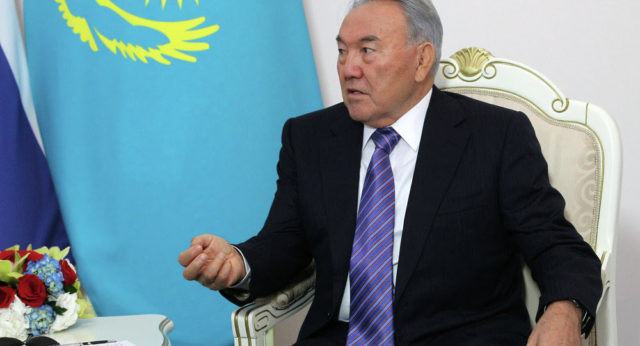Kazakhstan has announced it will outline a new Latin-based alphabet by the end of the year, departing from its Cyrillic-based script that has been in use since 1940.
Kazakh Minister of Education and Science Erlan Saghadiyev told reporters in Astana on July 26 that a special commission established on April 13 is working on creating “the most appropriate” variant of the Latin-based script for the Kazakh language.
Saghadiyev said over 500 classes in schools across the country will be taught in English from September.
Kazakh President Nursultan Nazarbayev has ordered that all publications, documents, and street signs switch from Cyrillic to Latin by 2025.
Some experts consider that the move is seen as an effort to emphasize Kazakh culture and distance the country from Russia.
Recall, President Nazarbayev authored an article, on April 12, in the state-run newspaper Egemen Kazakhstan (Independent Kazakhstan) under the title “Looking into the Future: Modernization of Public Conscience.” In his article, the president, in particular, suggested changing the current Kazakh alphabet from Cyrillic to Latin. The whole process, he declares, needs to be finalized by 2025.
The Latin alphabet was used in Kazakhstan between 1929 and 1940, when Soviet authorities decided it was time to switch back to Cyrillic. In fact, a special, so-called “missionary” version of Cyrillic had been developed in the 19th century by learned Russian immigrants settled in Kazakh lands as part of the geographic expansion of the Russian Empire into Central Asia. A prominent Kazakh educator, Ybray Altynsarin, had greatly contributed to the mass introduction of Cyrillic among native Kazakh speakers. It was in use until the October Revolution of 1917. Prior to that, Kazakhs had been using a 29-character Arabic script with a few modifications to reflect phonetic specificities. Written Arabic had been present throughout Kazakhstan since the tenth century. Tengrinews.kz reported on April 14 that for Nazarbayev, the 1940 decision to return to Cyrillic was purely “political” and did not reflect the cultural reality of Kazakhstan nor its linguistic history.








Islamic banking and finance is emerging in CIS member nations
Emomali Rahmon holds meeting with Tajiks living in Italy
Deputy head of Shahritous district detained on suspicion of bribery
Precious metals and gems account for 48.5% of Tajikistan’s total exports in Q1 this year
Tourism Development Committee releases the 2nd report on the risk of plague; this time, it says the risk is minimal
Eight members of Tajik opposition group detained in Rome
Tajikistan-Italy investment forum result sin signing of contracts worth more than US$160 million
Emomali Rahmon meets with WeBuild Group CEO in Rome to discuss the progress of construction of Roghun HPP
The population of Central Asia expected to exceed 1000 million by 2050
Tajikistan authorities warn about the risk of appearance of the plague in the country
All news
Авторизуйтесь, пожалуйста